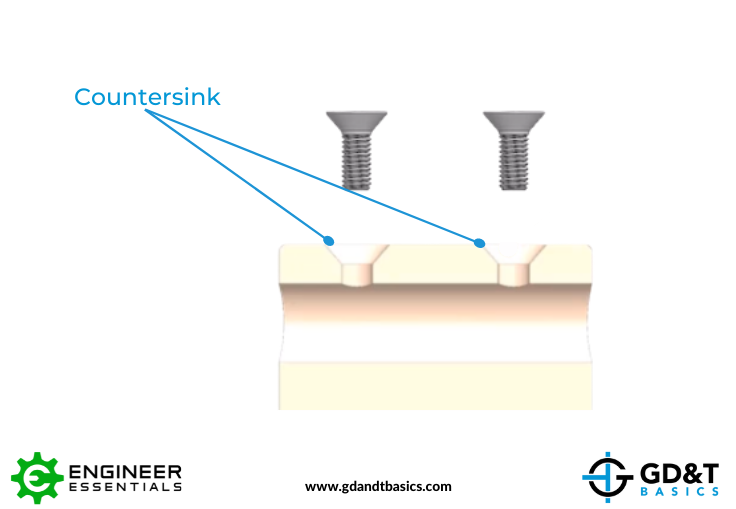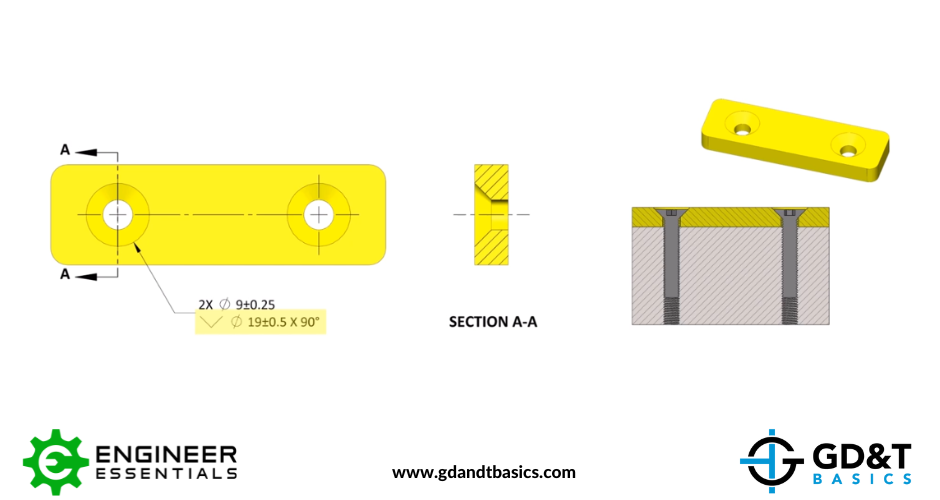Symbol: 
Definition:
The countersink symbol is used to indicate that a countersink hole feature is required. The purpose of a countersink is to allow a fastener, typically a flathead screw, to sit slightly below the surface of the part. A countersink consists of a conical hole that is coaxial to a cylindrical hole, where the angle of the cone is determined by the fastener to be used.

Application:
Countersinks allow a screwhead to sit slightly below the surface of a part to prevent exposed screwheads on that surface. Countersinks are also typically paired with a thru hole feature, as the screws will be passing through to the mating part.
As previously mentioned, the angle of a countersink is determined by the fastener being used. Metric fasteners use a 90-degree countersink, while imperial fasteners use an 82-degree countersink.
Just as with counterbore and spotface hole features, dimensions for a countersink are also listed directly below the dimension of the smaller coaxial hole. The countersink dimension contains the countersink symbol, the diameter of the countersink, and the angle of the cone.
In the example below, the part contains two thru holes with countersinks. The diameter of the thru holes is listed as 9 +/- 0.25, and the countersink is called out as a diameter of 19 +/- 0.5 with a conical angle of 90 degrees. The 90-degree angle indicates that metric fasteners are required.

Stop hunting through pages. Get our GD&T Symbols Chart—your quick reference guide with every symbol on one page.
Save it to your desktop or print it out for quick reference. We’ll send the digital chart straight to your inbox. No spam, just helpful GD&T resources.
Get Your Free Chart












































